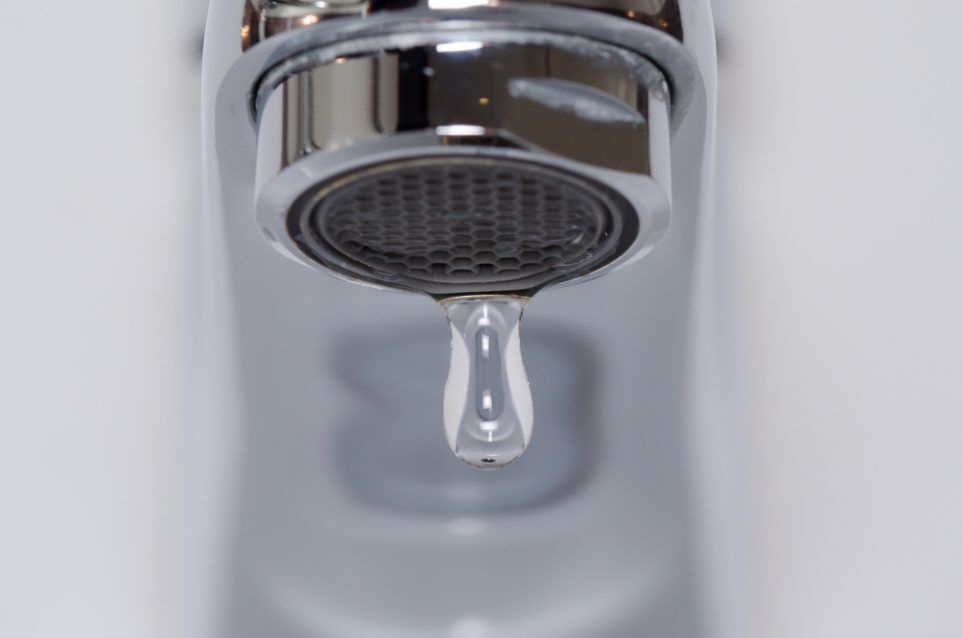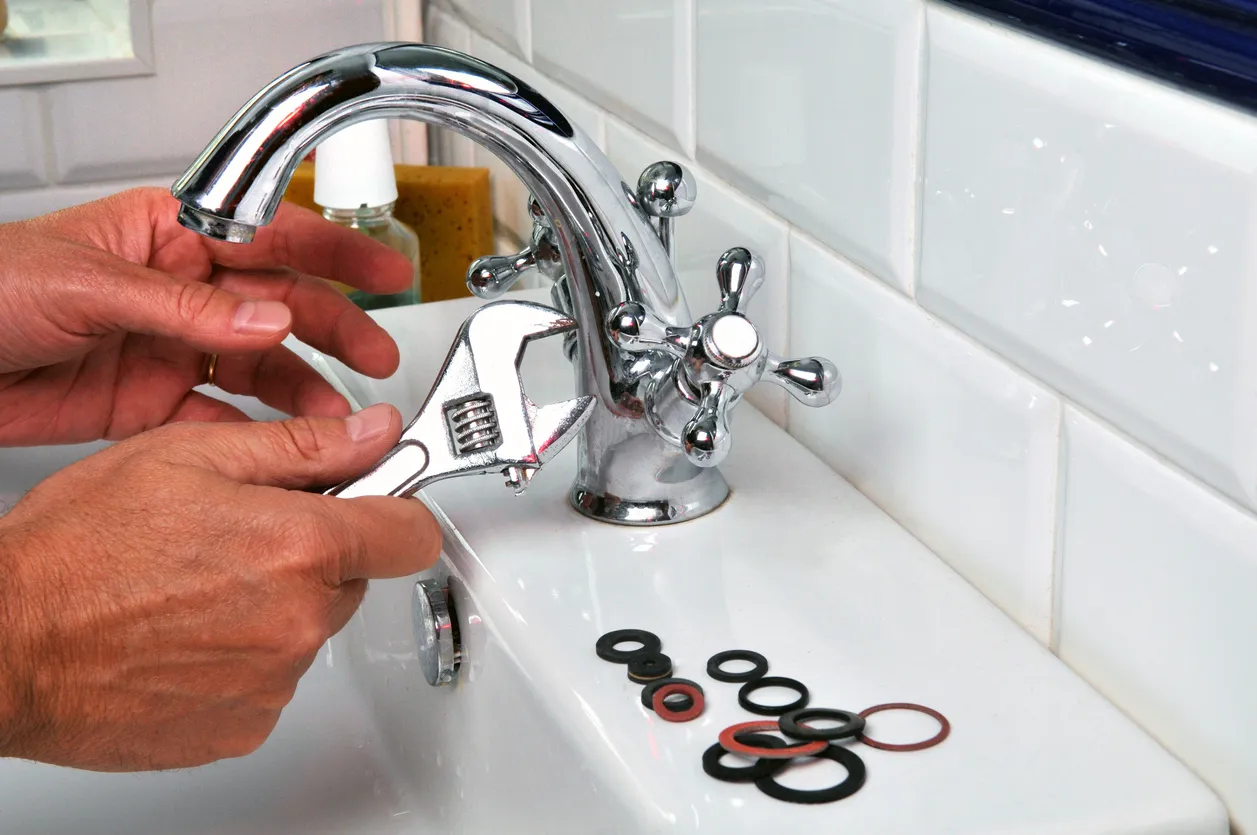Your Reasons Behind Repairing a Malfunctioning Faucet
Your Reasons Behind Repairing a Malfunctioning Faucet
Blog Article
The article on the next paragraphs involving Why Are My Faucets Dripping (And Can I Fix It Myself)? is rather captivating. Read it for yourself and decide what you think of it.

Leaking faucets might look like a minor hassle, but their effect exceeds just the annoyance of the sound. From drainage to sustaining unnecessary financial costs and health threats, ignoring a dripping tap can bring about different consequences. In this post, we'll look into why it's critical to address this common household concern promptly and successfully.
Waste of Water
Environmental Effect
Leaking taps add substantially to water waste. According to the Epa (EPA), a solitary faucet leaking at one drip per secondly can throw away greater than 3,000 gallons of water annually. This not only strains water sources yet likewise influences ecological communities and wild animals depending on them.
Step-by-Step Overview to Taking Care Of a Dripping Tap
Tools Needed
Before attempting to fix a leaking tap, collect the essential tools, including a flexible wrench, screwdrivers, substitute parts (such as washers or cartridges), and plumber's tape.
Typical Faucet Issues and Their Solutions
Recognize the type of tap and the specific problem triggering the drip. Common troubles include damaged washing machines, rusty shutoff seats, or damaged O-rings. Describe manufacturer directions or on-line tutorials for step-by-step assistance on fixings.
Financial Prices
Boosted Water Expenses
Beyond the ecological effect, trickling faucets can pump up water bills significantly. The gathered wastage over time equates into higher energy expenditures, which could have been prevented with prompt repairs.
Potential Home Damage
Moreover, long term trickling can result in damage to fixtures and surface areas bordering the faucet. Water build-up can create discoloration, rust, and even structural problems if left unattended, leading to extra repair service expenses.
Wellness Issues
Mold and Mold Growth
The continuous visibility of dampness from a dripping faucet creates an excellent environment for mold and mildew and mold development. These fungi not just jeopardize indoor air high quality however likewise pose health and wellness threats, especially for people with respiratory problems or allergies.
Waterborne Conditions
Stationary water in leaking faucets can come to be a breeding ground for microorganisms and other microorganisms, raising the risk of waterborne conditions. Pollutants such as Legionella germs grow in stationary water, possibly resulting in serious health problems when consumed or inhaled.
DIY vs. Professional Repair work
Benefits and drawbacks of Do It Yourself Repair
While some might try to deal with a dripping faucet themselves, do it yourself fixings feature their very own set of difficulties. Without correct expertise and devices, do it yourself attempts can intensify the concern or result in incomplete repair work, lengthening the trouble.
Advantages of Employing an Expert Plumber
Hiring an expert plumber makes sure that the underlying cause of the leaking tap is attended to effectively. Plumbing technicians have the knowledge and equipment to detect and repair tap concerns effectively, conserving time and decreasing the risk of further damages.
Environmental Obligation
Specific Payment to Conservation
Taking responsibility for fixing leaking faucets aligns with wider efforts towards water preservation and environmental sustainability. Every person's actions jointly make a considerable effect on protecting priceless sources.
Sustainable Living Practices
By prioritizing timely repair services and embracing water-saving behaviors, people contribute to sustainable living methods that benefit both present and future generations.
Safety nets
Regular Upkeep Tips
To avoid dripping taps, perform regular maintenance such as cleaning up aerators, inspecting for leakages, and replacing damaged parts quickly. Additionally, consider installing water-saving tools or updating to extra effective components.
Value of Prompt Fixes
Attending to dripping taps as quickly as they're observed prevents further water waste and prospective damages, inevitably conserving both water and money over time.
Influence On Residential Property Value
Assumption of Well-Maintained Home
Preserving a home in good condition, consisting of attending to upkeep problems like leaking taps, enhances its regarded worth and value amongst prospective purchasers or lessees.
Impact on Resale Value
Characteristics with properly maintained plumbing fixtures, consisting of faucets, command higher resale worths in the realty market. Addressing dripping faucets can contribute to a positive perception during residential or commercial property evaluations and negotiations.
Final thought
Dealing with a leaking faucet goes beyond simple convenience; it's an important step towards conserving water, minimizing financial prices, and securing health and home. Whether with DIY repair services or professional support, acting to take care of dripping taps is a little yet impactful way to promote accountable stewardship of sources and contribute to a healthier, much more sustainable future.
How to Fix a Leaky Faucet: Step-by-Step Repair Guide
A leaky faucet may seem like a simple annoyance, but if it's not fixed promptly, that leak could cost hundreds to potentially thousands. From water damage to mold, mildew, and high water bills, even a tiny leak can be catastrophic if left unattended. Damage like this can even affect the overall value of your home, so it's important to take the right approach for leaky faucet repair. You may need the help of a plumber in some cases, but we've got a few tips you can try on how to fix a leaky faucet before calling the pros.
Four Faucet Types
When you're learning how to fix a leaky faucet, the first step is knowing what kind of faucet you're working with! There are four common types.
Cartridge Faucets
Cartridge faucets come in one- or two-handled varieties. In one-handled cartridge faucets, hot and cold water combines in a single cartridge. In the two-handled versions, hot and cold water are controlled separately and mixed in the faucet.
Ball Faucets
Ball faucets have a single lever you push up and down to adjust the pressure and rotate to change the temperature. A slotted metal ball controls the amount of water allowed into the spout.
Compression Washer Faucets
They're the oldest type of faucet, but they're still used in many homes — especially older ones. Compression faucets have two separate handles that, when turned, raise or lower the washer that seals a water valve. This valve stops water from flowing through the faucet when it is turned off.
Disc Faucets
Disc faucets rarely need to be repaired due to their maintenance-free design. The water flow is controlled by two discs — the upper one raises and lowers against a fixed lower disc, creating a watertight seal. If your disc faucet starts leaking, you may need to replace the seals or clean residue buildup from the inlets.
Fixing a Leaky Faucet
Step 1: Turn Off the Water
Whether you're learning how to fix a leaky bathtub faucet or how to fix a leaky kitchen faucet, always turn off the water supply to your working area when you're fixing a leak. The last thing you want is a flood added to your list of things to fix.
Look for the shutoff valves below your sink or around the tub and turn them clockwise to stop the water flow. If your faucet doesn't have shutoff valves, you may need to turn off the water for the whole house. Check to make sure it's off by turning the faucet on. If nothing comes out, you're ready to start the repair.
Step 2: Take Apart the Faucet
How you disassemble your faucet depends on the type of fixture you have. You can use a flathead screwdriver to remove the caps on top of the handle or handles for cartridge and compression faucets. Inside, you should see handle screws. Unscrew these with a screwdriver to remove the handle.
Disc- and ball-style faucets will typically have an inlet screw near the handle, and removing that will reveal the interior of the faucet.
Detach the Valve Stem
For cartridge- and compression-style faucets, you'll see the inner valve stem or cartridge once you remove the faucet handles. If you have a compression faucet, unscrew the brass valve stem. If you have a cartridge faucet, pull out the cartridge. If your cartridge has been in place for a while, it may require some tools or extra force to remove it due to mineral deposits.
Examine and Replace Parts
Once you've removed the parts, check them out to confirm what needs to be replaced. You may see corroded rubber washers, O-rings, stems, or cartridges. On a ball-style faucet, check the seats and springs for damage.
If you need to repair a leaky disc faucet, check the inlet and seals on the lower disc.
Once you determine what parts must be replaced, visit your local hardware store. Bring the damaged parts with you to ensure you can purchase the correct components to replace them.
Clean Valves and Faucet Cavity
If you've removed a stem or cartridge, you may notice mineral buildup in the faucet's threads. Use white vinegar to clean the valve seat by soaking it for a few minutes, then scrub it away with a soft toothbrush and rinse with warm water. You can also clean the interior of the faucet in the same way.
Reassemble the Faucet
Once your faucet is cleaned and the required parts have been replaced, it's time to reassemble it. Put the pieces back together and slowly turn the water supply back on. Doing this slowly is crucial because too much initial water pressure can damage the new hardware you've just installed.
https://homewarranty.firstam.com/blog/how-to-fix-leaky-faucet

Hopefully you enjoyed our section about Why Are My Faucets Dripping (And Can I Fix It Myself)?. Thanks for taking the time to read through our content. Do you know someone else who is involved in the topic? Do not hesitate to promote it. We thank you for your readership.
Report this page